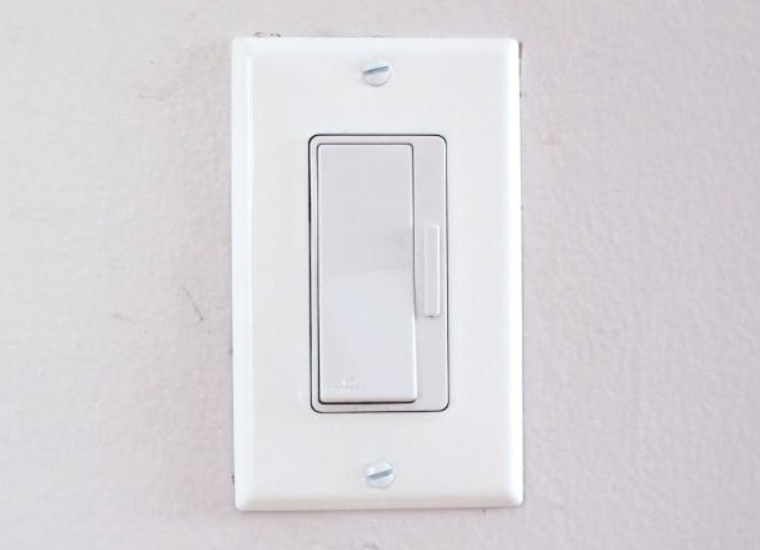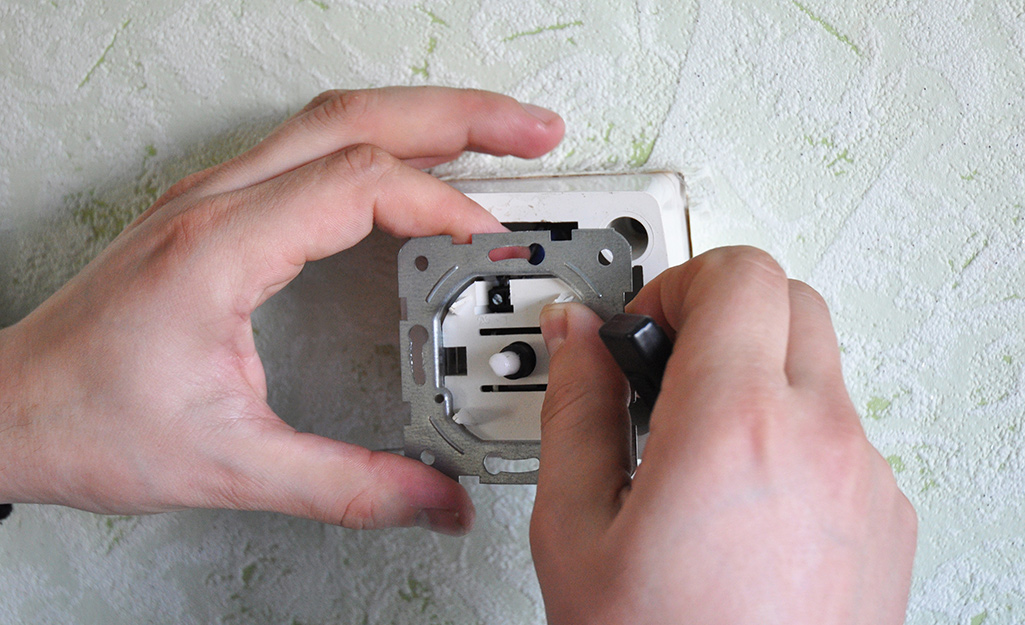Dimmer switches are usually used to regulate the light output of light bulbs. The function of a fuse is to protect the wiring in a circuit. When something goes wrong in the electrical current, such as a blown bulb, and too much current begins to flow, the fuse's internal wire will melt; similar to an airbag deploying during a car crash. So, what are fused dimmer switches?
Are there fuses in dimmer switches?

Older dimmer switches used fuses to protect the switch or prevent dangerous temperatures if the device became too hot. They were built into the switch and were difficult to replace, unlike most fuses. Modern dimmers no longer use fuses because they have internal temperature-sensitive devices that will shut off the power before it becomes dangerous.
Even though fuses are no longer used in dimmer switches, they're still an important part of your home's electrical system. The main electrical panel will have fuses or circuit breakers to protect the wiring in your home. If there's a problem with the current, such as a blown bulb, the fuse will "blow" or the circuit breaker will "trip," shutting off the flow of electricity to prevent a fire.
A fuse isn't required for every dimmer switch. Some do, but most modern manufacturers have chosen not to include one. Fuses were generally integrated rather than replaceable items. There's no practical disadvantage to including a fuse in a dimmer switch, so I'll look at why they're used and why most modern dimmers don't incorporate them anymore.
Thus, while it's not entirely accurate to say that there are no fuses in dimmer switches, it is more accurate to say that most modern dimmer switches do not use fuses. This is because they have other safety features built in, such as thermal protection devices, that make fuses unnecessary.
Why do people use fuses?
There were two primary reasons for including a fuse in a dimmer switch. The first was to safeguard the dimmer switch in the event that the light fitting fails. Electrical components are complex, but they are also delicate. If a lamp blows on a circuit, there may be a surge of current. The fuse would protect the dimmer switch by blowing as well, breaking the connection completely. The second reason for using a fuse was to protect the home in the event of a fire. If the dimmer switch were to catch fire, the fuse would once again break the connection, hopefully stopping the fire from spreading.
These days, fuses are no longer required in dimmer switches. Technology has advanced to the point where they are not needed. However, some people still prefer to use them, just in case. Besides, fuses are relatively cheap and easy to replace, so it is not a big deal to include one.

Can you replace a fused dimmer switch with the ordinary one?
What if you had the fused dimmer switch and now you need to replace it with the one without a fuse? Is it even possible? The answer is - yes, you can replace the fused dimmer switch with the regular one. Just make sure to turn off the power to the circuit before you begin. You will also need to wire the new switch in the same way as the old one. If you are not comfortable doing this, you should call an electrician.
In order to replace one type with the other, you will need a screwdriver, wire strippers, and a new switch. First, turn off the power to the circuit. Then remove the old switch from the wall. Unscrew the faceplate and pull the switch out. Take note of how the wires are connected. You will need to connect the new switch in the same way. Use your wire strippers to remove about half an inch of insulation from the end of each wire. Attach each wire to the appropriate terminal on the new switch. Screw on the faceplate and turn on the power to the circuit. Test your new switch to make sure it is working properly.
Replacing a fused dimmer switch with a regular one is not difficult, but it is important to take the necessary safety precautions. Always turn off the power to the circuit before working on it. If you are not comfortable doing the work yourself, call an electrician. With a few simple tools and a little bit of knowledge, you can replace your old switch with a new one in no time.
Safety tips when changing the fused dimmer switches
- Always turn off the power to the circuit before working on it.
- If you are not comfortable doing the work yourself, call an electrician.
- Use wire strippers to remove about half an inch of insulation from the end of each wire.
- Attach each wire to the appropriate terminal on the new switch.
- Screw on the faceplate and turn on the power to the circuit.
- Test your new switch to make sure it is working properly.
Follow the safety tips when changing the fused dimmer switches to avoid any accidents. If you are not comfortable doing the work, it is always best to call an electrician. With a few simple tools and some basic knowledge, you can easily replace your old switch with a new one.
FAQ

Can a dimmer switch cause a breaker to trip?
A faulty dimmer switch can easily trip a breaker. It might have a loose connection that arcs, which would cause the breaker to trip sporadically. If it trips in an instant, then the dimmer is likely overloaded. Although other dimmer faults won't trip a breaker, they will still result in other issues. Besides, if a breaker trips, it's an indication that there might be something wrong with the dimmer switch.
Dimmer switches are generally very safe and reliable. However, like any other electrical device, they can malfunction. If your dimmer switch is causing your breaker to trip, it is best to replace it with a new one. Always turn off the power to the circuit before working on it. If you are not comfortable doing the work yourself, call an electrician. With a few simple tools and some basic knowledge, you can easily replace your old switch with a new one.
Can one circuit have two dimmers?
If you want to add dimmer switches in every room of your house, there's no problem. There's no such thing as a maximum number of dimmer switches on a home lighting circuit. The current is switched on and off by a dimmer switch, which controls it. Two filaments in a single bulb are used in most dimmer switches.
If your home has a lot of rooms with different lighting needs, you might want to consider adding dimmer switches to each room. This way, you can easily adjust the lighting to suit your needs. Always turn off the power to the circuit before working on it. If you are not comfortable doing the work yourself, call an electrician. With a few simple tools and some basic knowledge, you can easily add dimmer switches to every room in your house.
How can you tell if a dimmer switch is bad?
Connect the alligator clip of the continuity tester to one of the dimmer wire leads. Hold the continuity tester's probe to the other dimmer wire lead. If a light glows on the continuity tester's continuity LED, then it is functioning; otherwise, you have a faulty dimmer switch. You can also use a multimeter to test for continuity.
If your dimmer switch is not working, it might be due to a number of reasons. Always turn off the power to the circuit before working on it. If you are not comfortable doing the work yourself, call an electrician. With a few simple tools and some basic knowledge, you can easily troubleshoot and fix your dimmer switch.
Conclusion
A fused dimmer switch is very safe and reliable. However, like any other electrical device, they can malfunction. If your dimmer switch is causing your breaker to trip, it is best to replace it with a new one. Always turn off the power to the circuit before working on it. If you are not comfortable doing the work yourself, call an electrician. With a few simple tools and some basic knowledge, you can easily replace your old switch with a new one.
If you want to add dimmer switches in every room of your house, there's no problem. There's no such thing as a maximum number of dimmer switches on a home lighting circuit. The current is switched on and off by a dimmer switch, which controls it. You can easily add dimmer switches to every room in your house by following the same procedure.